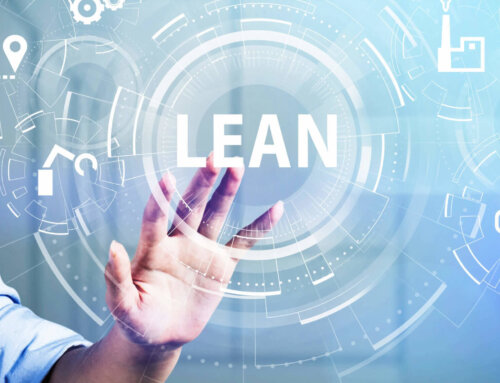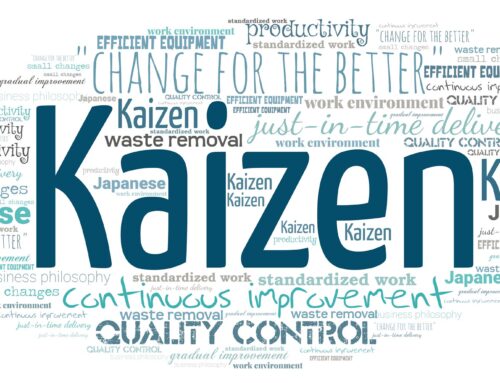By Gene Russell, Manex President and CEO
This article delves into Kaizen basics and how Kaizen is used in the manufacturing selling.
Kaizen is a Japanese term meaning “change for the better” or “continuous improvement.” It is a Japanese business philosophy regarding the processes that continuously improve operations and involve all employees. Kaizen sees improvement in productivity as a gradual and methodical process. – Source: Investopedia
What are Kaizen basics? How is Kaizen used in a factory or shop floor?
Kaizen is the philosophy of continuous improvement. Lean manufacturers use kaizen to help eliminate waste. With Kaizen, manufacturers continuously improve standardized processes, equipment, and other daily production procedures. The main requirement is that existing procedures be standardized and documented so that improvements can be evaluated objectively. Although primarily associated with manufacturing, businesses practice kaizen across all functions.
Why is Kaizen so popular?
Its popularity rests on several merits and outcomes. While it is true that Kaizen benefits quality and output, in our opinion the two most powerful are culture and communication. Kaizen creates a culture of empowerment and responsibility among all team members. This facilitates the core of continuous improvement: change for the better, which is the English translation of Kaizen.
It is also the absolute common-sense approach that Kaizen brings to a business. It’s not a highfaluting consulting concept requiring five consultant trainers every day. For example, who can argue with or misunderstand the following:
- Good process creates good results
- Improvements are based on small changes
- Improvements must be measurable, standardized, and repeatable
- Empower the employees
What are the basic principles of Kaizen?
Kaizen is concerned with continuous improvement by reducing waste in processes, guided by the key belief that good processes lead to good results. In manufacturing, this means that reducing waste in a process adds value to the customer. In Lean manufacturing, the eight wastes (also known as Muda, or any activity that consumes resources without creating value for the customer) are defined as:
Defects: When a product is not fit for use it must be scrapped or reworked, adding cost to the production process without adding value. Even in reworks, the damage can be significant and long-term should you ship the products below customer expectations.
Waiting time: Unevenness in the work environment can lead to people waiting on material or equipment, or machines idling and can result in overproduction or excess inventory. We’ve seen shops invest in metal cutting automation, while their powder coat line could not keep up resulting in excessive wait times and work-in-progress materials. There are hundreds of thousands of examples in food, clothing, electronics, medical device, and more.
Worker extra motion: A larger space takes extra time and an inefficient process layout requires the operator to take additional time to complete a task compared to an idealized ergonomically designed space. Example: An assembly operation where the operator must lift items from the floor versus arm-level bins.
Excess inventory: Excess inventory can cause inefficiencies and cause delays in the detection of problems. Problems can accumulate, and with more inventory, problems take longer to solve. We often see excessive amounts of cash tied up in this problem, leading to late AP and valuable vendor relationships being damaged.
Overproduction: Producing too much before it is required obstructs a smooth flow of work, raises the costs of production and storage, hides defects inside work-in-progress, and increases lead time. When we see housekeeping issues, safety issues, crowded facilities, and poor use of ERP systems it is often revolving around or causing overproduction.
Extra processing: This comes from poor layout of processes, or equipment running beyond the time required. For example, a clothes dryer running for six hours when the clothes were dry in 30 minutes, a mixer running all day when it only takes a few minutes to blend ingredients, or walking 100 steps to get setup tools versus always having the tools within reach.
Unnecessary transportation: Movement of product beyond the absolute minimum. The waste removal goal is to minimize the movement of product.
Unutilized talents: Under-utilizing skills or assigning tasks to employees with insufficient training. This does nothing for the business or the employees. The results are often friction between management and damaged culture.
In our next blog post, we will expand on these elements and give you more tools and understanding to use in your business. The core thought that I will leave you with is that if you improved by 1% per day you will have improved 37x in one year.
About the Author
As Manex President and CEO, Gene Russell is a driving force behind the firm’s successful track record in helping California manufacturing companies grow and thrive. He has held three successful CEO positions over a 20-year period for businesses that included early-stage, private equity, and non-profit. He has served as senior leadership for global Fortune 100 and iconic consumer-branded companies. Prior to Manex, Russell led a turnaround at a California midsized manufacturer. His experience in global sourcing and manufacturing over several decades led him to Manex where he brings real-world experiences, and as a result, a personal passion to restore and invigorate domestic USA-based manufacturing.


